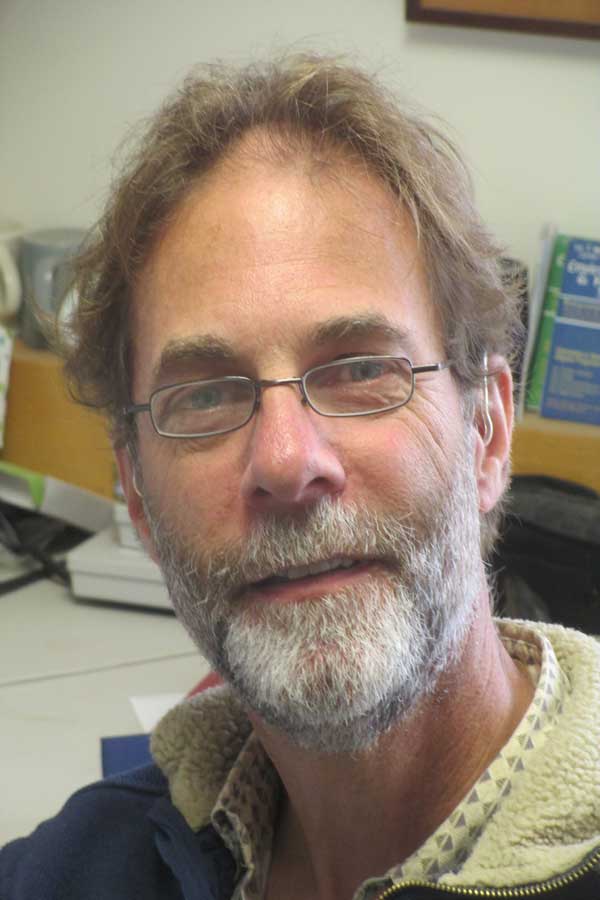Students search for E-coli in the Lamoille basin
Professor Robert Genter
Most people look forward to hot and sunny summer days, but the six interns studying nutrients in water samples for 10 weeks this summer at Johnson State College preferred the stormy weather.
Across 19 different stream sites in the Lamoille basin, students collected water samples to be analyzed for E-coli bacteria, nitrogen, and phosphorous levels. This annual research began in 2008, from a grant given by Vermont EPSCoR (Experimental Program to Stimulate Competitive Research) Center for Workforce Development and Diversity (CWDD).
It is part of a larger global climate change project supported by the National Science Foundation. This internship and research opportunity is led every summer by Dr. Robert Genter, environmental health and sciences professor, and lab technician Saul Blocher at Johnson State College in Bentley Hall.
“The overall goal of what we’re looking for is how we can benefit the health of Lake Champlain in the future,” said Kateri Bisceglio, one of the summer interns. She explained that North Beach, a section of Lake Champlain, is closed at certain points throughout the summer due to harmful algae from increased phosphorous levels.
Genter said that the genetic identity of E-coli from cows, for example, should be different from that of humans, so they are trying to determine the specific sources of it in the water. The storm weather is important because it leads to a greater amount of run-off from the river banks.
“If we fix all of the little streams and rivers that go into all of the tributaries of Lake Champlain, maybe one day we can fix Lake Champlain,” Bisceglio said. “But it’s not just coming from Vermont [the high nutrient levels], it’s also coming from New York and Canada.”
However, according to Bisceglio, they have not reached the remediation stage yet. Data collection is still the primary focus, and will continue to be for several years.
This data collection is a multiple-step process that the interns were able to experience. At the beginning of the very first week, the students were asked if they had a preference for what role they would be playing throughout the 10 weeks. After a week of trying out all of the roles, they were asked again, and could focus on what job they found to be the most interesting.
“I really wanted to be out in the field and working in the streams,” Bisceglio said. She led a small team to the sites to collect the water when the ground was saturated from rainfall. Other interns such as Dalton Gomez, worked doing nutrient analysis in the lab, and others with the microbiology lab and updating spreadsheets and data.
Along with the main task, interns also conducted individual research projects that they will present at the Vermont EPSCoR student research symposium in April 2015.
“I was comparing the discharge and velocity of the streams to the USGS (U.S. Geological Survey) gauge of the river in Johnson when the streams are rising. Is the river rising at the same time?” Bisceglio said. Combined with the overarching goal, this research opportunity helped her and others to get to know the lab equipment and learn important data entry skills.
“The students are responsible for everything. I want them to be trained so if they get hired they know how to do all of this basic work,” Genter said. He explained that the program is really focused on preparing the next generation of scientists. They do everything from acid washing bottles to charging machines, looking at the weather, and filtering, freezing, and analyzing the data. “The research wouldn’t be possible without the students,” Genter said. “I really rely on them.”
It was an awesome experience,” Bisceglio said. “I’m going to reapply and hopefully do it again next summer.”
Marilyn joined the Basement Medicine staff in Spring 2015 as a staff writer and managing editor.


